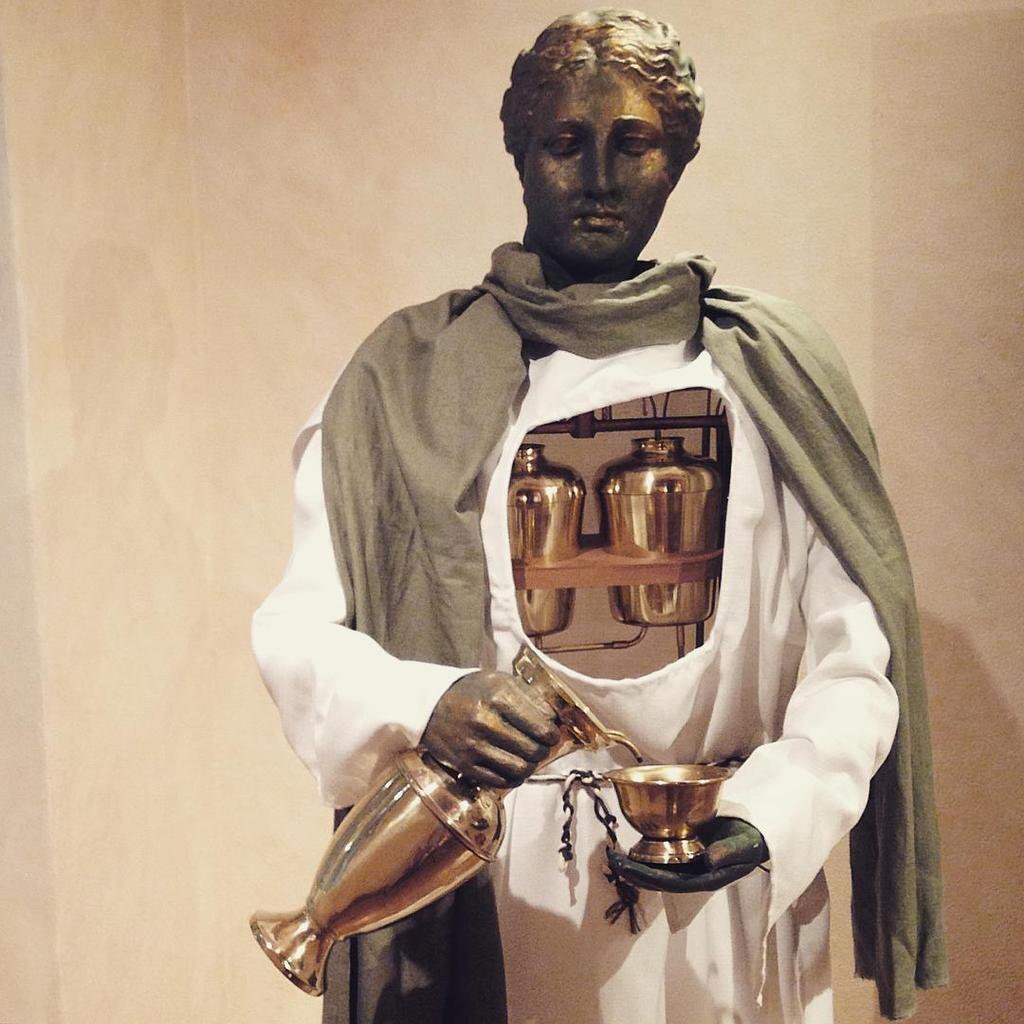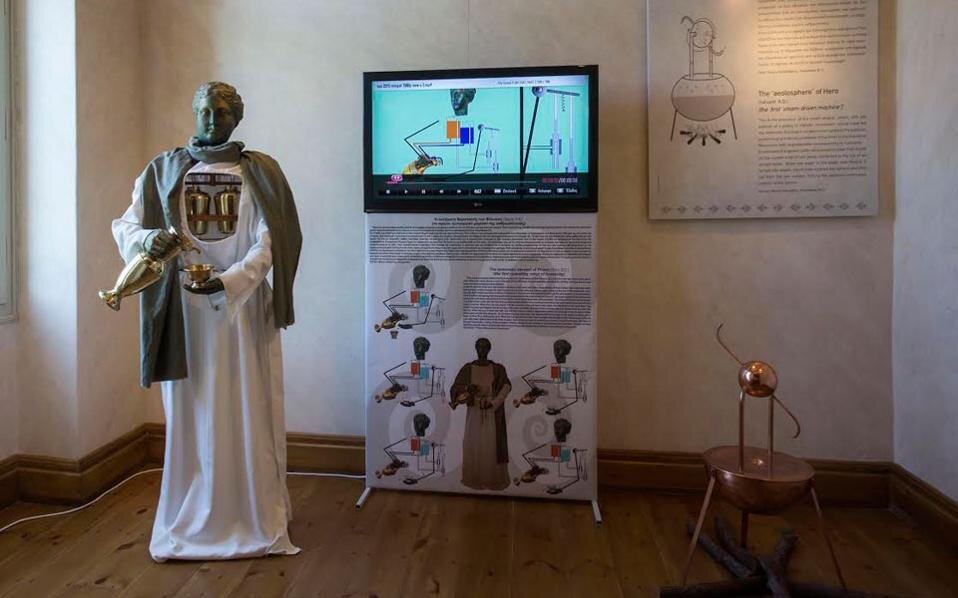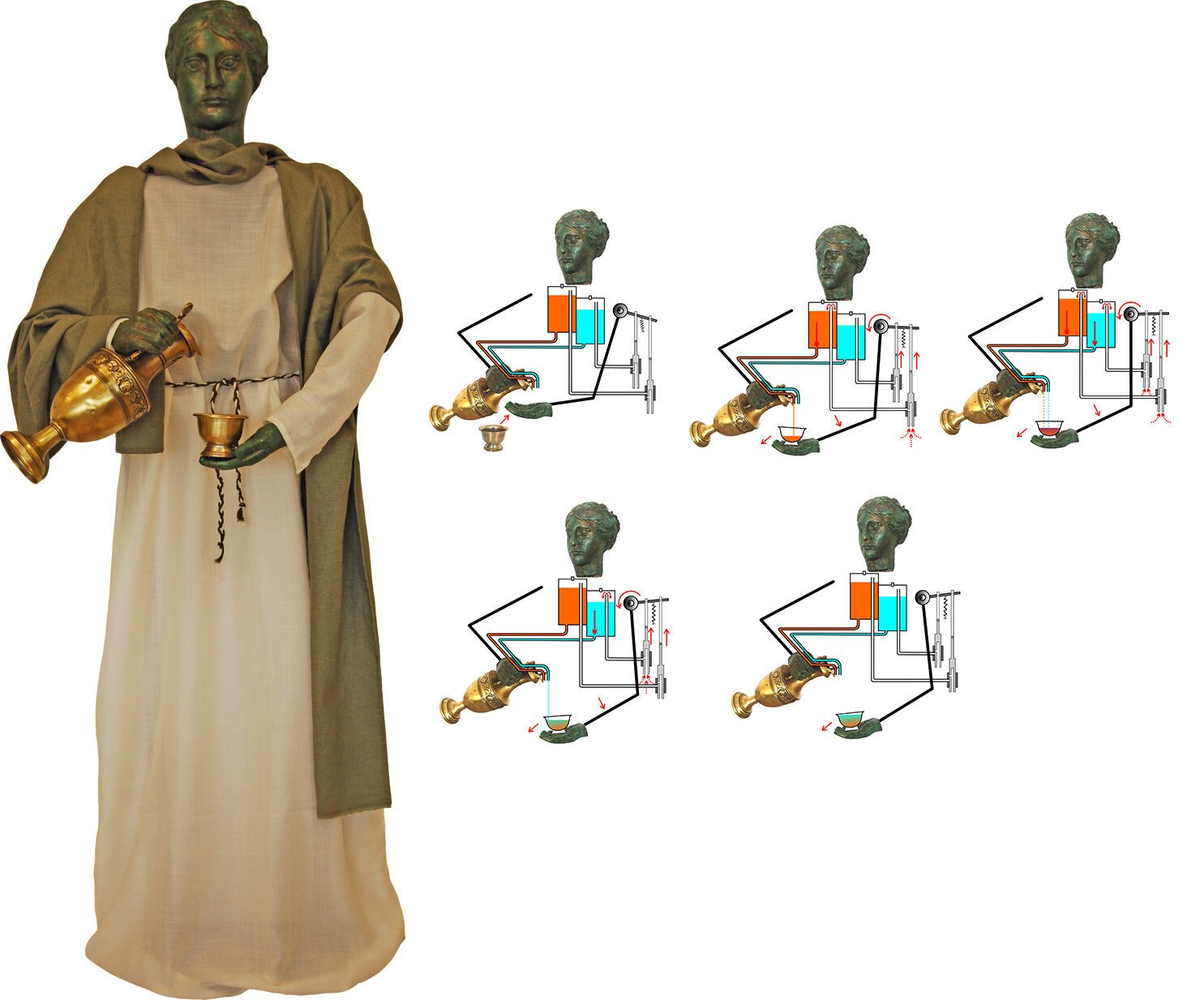5 Incredible inventions of the ancient Greeks explained in the 20th century.
A new museum dedicated to the advanced technological inventions of the ancient Greeks, and in particular the valuable work of the scientist Archimedes, is operated at Ancient Olympia and impresses with the presentation of the technological avant-garde of ancient Greece.
The "robot - servant" of Philon
"Philon the Byzantine", also known as "Philon the Engineer" was a great mathematician and engineer who lived in the second half of the 3rd century BC. Among his many inventions was an anthropomorphic robot that performed the tasks of a servant. The robot held a pitcher of wine in its right hand so that the visitor could place a cup in the palm of its left hand, and it poured the wine.
The robot was the result of a complex construction of tanks, hoses, air tubes and swivel springs that interact with changes in weight and air pressure.
The "Screw or Worm" of Archimedes
Archimedes of Syracuse (287 BC - 212 BC). Ancient Greek Mathematician, physicist, engineer, inventor, and astronomer. Although few details of his life have come to light, he is considered one of the leading scientists of ancient Greece. A large part of Archimedes' work in engineering arose from the needs of his personal residence in Syracuse.
Traditional action of the "Archimedean screw" pumping water up.
King Ieron II the Tyrant, commissioned Archimedes to design a huge ship that became known as the "Syracuse". The king wanted to use it to transport at least 600 people on luxury trips, to transport supplies, but also as a naval warship. The "Syracuse'' also contained a gymnasium and a temple dedicated to the goddess Aphrodite. Since such a ship would absorb considerable amounts of water, Archimedes' "screw'' was intended to help absorb the water. The device contained a rotating screw that turned by hand, in the form of a blade into a cylinder. This device is still used today to pump liquids and solids in the form of granules such as coal and wheat.
The rotating "Automatic Theater" of Heron
Heron from (10-70 AD) was a Greek mathematician and engineer who is considered one of the greatest experimenters of the ancient world. One of his creations was an "automatic theater", which is considered the first "robotics".
With this device he performed the play "Nafplio", a story set in the time after the Trojan War. The "automatic theater" was a structure up to 1.5 meters high, which looked like a temple, was decorated with statuettes of deities, and moved based on a successful sequence of drive systems made of ropes and knots, operated by a rotating gear.
The "Claw" or "Iron Hand" of Archimedes
The "Claw" of Archimedes is a weapon said to have been developed for the defense of the city of Syracuse. Also known as the"Iron Hand", it consists of the arm of a crane ending in a metal hook.
Detail of a wall painting of the Claw of Archimedes sinking a ship, taking the name "iron hand" in the ancient sources literally - Giulio Parigi (1571–1635)
Each time it is attacked, the arm swings upward and dislodges the ship from the water. There were modern experiments for the useful purpose of the device until 2005 when the TV documentary "Superweapons of the Ancient World" showed a version of the device.
The "Burning Mirrors" of Archimedes
In the 2nd century AD, Lucian writes that Archimedes destroyed enemy ships with fire during the siege of Syracuse. Centuries later, Anthemios Trallianos mentions flaming glass as a weapon of Archimedes. The device, also known as Archimedes' "Rays of Light" was used to turn sunlight on oncoming ships, causing them to catch fire. After much controversy, it was recorded that this invention consisted of polished bronze or copper shields that acted as mirrors that could be used to turn sunlight on ships.
A test of Archimedes' "Ray of Light" was conducted in 1973 by the Greek scientist Ioannis Sakkas. The experiment took place at the Scaramanga naval base outside Athens. In this case, 70 mirrors were used, each with a copper coating and a size of about 1.5m. The mirrors were aimed at a plywood model of a Roman warship located about 50 m away. When the mirrors accurately marked the ship, it caught fire within seconds. The plywood ship was coated with tar paint, which may have caused ignition. The tar coating was common on ships in ancient times.
The museum is an initiative of the architect Costas Kotsanas, who founded the museum of Ancient Greek Technology in Katakolo, Ilia. According to Mr. Kotsanas, the museum aims to highlight even the most unknown aspects of Archimedes' scientific work, illustrating the technology of the ancient Greeks, which in the end was not so far from the development of today's technology.

















